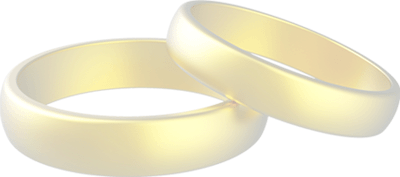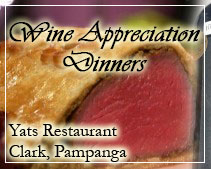About Wines from Bordeaux Best wine supplier in Philippines discusses wine related topics Bordeaux Wine Guide: Introduction – 11August19
JUNE 12, 2011
The first time I experienced the bitter cold of a winter in the vineyards, I was in Bordeaux. I had previously spent many hours among the vines, but they had always been lush with green foliage, either during the flowering, when the nascent green flowerbuds look like bunches of tiny grapes, or later in the year when the vines were laden with their annual crop. Never before had I witnessed the rows of bare vines, devoid of their greenery, so stark and lifeless. And never before had I directly experienced the iciness that these vines endure during the darker months of the year. The temperature was certainly not the coldest – I seem to recall the thermometer read 3ºC as we left the chateau – but out in the flat, rather featureless, windswept vineyard it seemed much colder than that reading would suggest. I am sure the temperature was nothing like those that the Bordelais endured during the great frost of 1956 which killed so many of the vines, but nevertheless within a quarter of an hour my feet were turning numb, and I would swear my nose was turning blue. It was thus remarkable to note that the team working their way through the vineyard pruning the vines had, despite our relatively early start, probably already been out at work for several hours. And they were still going strong, helped no doubt by well chosen and more appropriate clothing than my rather thin skiing fleece, and the warmth of a Gauloises permanently dangling from the bottom lip. And with several vineyards to complete before the sap began to rise, signifying the arrival of spring, they had to keep working at a good pace. This is a picture repeated all over the world, every year, although particularly in Bordeaux. Being the world’s largest wine region, there are approximately 120000 hectares of vines here. Assuming a planting density of 6000 vines per hectare (a conservative estimate – some properties will plant at 8000 or even 10000 vines per hectare) that makes for at least 720 million vines in Bordeaux alone, all pruned annually, each one by hand.
Both before and since that visit to Bordeaux, I have gained more experience of this region’s wines than those from any other part of France, indeed any other wine region of the world. For that reason coverage of the wines of Bordeaux is one of the stronger features of this website. Mine is not a unique admiration of the wines, not by a long way; without a doubt Bordeaux is one of the most debated of wine regions, surely receiving more column inches on websites and in print than any other. This will no doubt continue, as despite seemingly ever-rising prices and a host of controversies concerning the region and its wines, our love affair with Bordeaux looks set to continue for the time being. This unwavering admiration is because of, or depending on your point of view perhaps in spite of, the dramatic wind of change that has swept through this region’s vineyards and cellars in the past few decades. Where once there were underperforming chateaux, some will argue, today we have dozens of new proprietors making wines of a quality that was once beyond their wildest aspirations. Others will counter that the new quality that has pervaded Bordeaux has been accompanied by a new style, richer and more immediately flattering, and yet less pleasing to the palate that can recall the magnificent first and second growth wines of years gone by, wines that were more touched by terroir (and perhaps good luck) than by the over-extraction, micro-oxygenation, reverse osmosis, cryo-extaction and 200% new oak that might be found today. They will also recall the day when they could afford those esteemed first and second growths, something that is less likely in light of the aforementioned rising prices of today.
Despite this apparent metamorphosis, there are many facets of the region that remain unchanged, and the traditional birds-eye view of Bordeaux still largely holds true. With the passage of time proprietors will come and go, and oenologists’ fees may wax and wane, but some things are seemingly immutable. It is likely to be old news to readers of this guide that the top left bank wines tend to feature Cabernet Sauvignon from gravelly terroirs, and that those of the right bank tend to favour Merlot (or occasionally Cabernet Franc), and here limestone and clay (and sand) are more prominent. And that Sauvignon Blanc is not just found in New Zealand and Sancerre, but is also one of several grape varieties utilised in producing the world’s most sought after sweet wine, Yquem, as well as a number of very noble dry wines capable of cellaring for many years. And that one of those other varieties is Semillon, which also seems to have settled nicely in Australia’s Hunter Valley where it makes some very admirable dry wines. Although obvious to some, these maxims (or perhaps generalisations would be a more apt description) are important cogs in the machine that is Bordeaux, and thus this guide must make mention of them. They are core facts, and they are therefore included in this guide along with information on the history of the region and terroir, along with more detailed nuances such as relevant INAO regulations imposed from afar and more local controversies, moving across the region commune by commune. It is my intention that the guide may pique the interest of all, no matter how well qualified in wine, whilst still being of use to the beginner.
The first commune to come under the inspection of this guide is Graves, and I place it here with a distinct purpose; it is all too easy to forget Graves, many guides dealing with it as if an afterthought, a time consuming but necessary and unavoidable diversion that follows Pauillac, Margaux and the like and precedes the move to look at the increasingly popular and expensive wines of the right bank. But this region has historical precedence; it is one of the oldest viticultural areas in all Bordeaux, and thus deserves to be at least treated equally – or out of respect for our elders, perhaps preferentially? In this guide I bring it to the fore, before preceding to look at its equally historic near neighbour Sauternes. In style the wines are completely different, but this region is no less ancient than Graves, and as one almost completely encircles the other it seems reasonable to deal with them together. Then we proceed northwards through the communes of the left bank, starting with Margaux, then St Julien, Pauillac and St Estèphe, before finishing with the true Médoc, the viticultural plain to the northwest of St-Seurin-de-Cadourne which is home to so many of the region’s most admired Cru Bourgeois properties. Then, hopefully before we have exhausted ourselves with this inspection of the communes of the left bank, we hop to the far side of the Gironde to look at the other great appellations of the region, namely Pomerol and St Emilion. These are regions that have experienced a revolution during recent years – neither were deemed worthy of classification in 1855 – so it is perhaps fitting that of all the red wine regions we come to these as we near the end of our journey, after dealing with Graves at the beginning.
This is perhaps not quite the end, however, because I am conscious of one of many great problems with Bordeaux today. This immense wine region, which incites so much debate and discussion, is never truly debated at all. When we talk of Bordeaux, all too often we restrict ourselves to talk of Le Pin and Petrus, Lafite and Latour. Or maybe, with sights set less high, Poujeaux or Potensac, Larmande or Larrivet-Haut-Brion. What of the rest of Bordeaux, all those millions of vines that lie outside the vineyards of the top 50 or even top 100 estates? These too are worthy of our attention, not only because here we can find interesting wines, but also out of financial necessity; as prices increase, many Bordeaux savants will find themselves increasingly familiar with historic terroirs such as those around Fronsac, once more highly regarded than any limestone slope around St Emilion, or even the wines of the Entre-Deux-Mers, which on occasion can be delicious. And so it is not only necessary but indeed desirable to cast the spotlight upon these regions for at least a little while, and this is how I will draw this guide to a close, in what might be a look into the Bordeaux of the future – from the drinker’s view, if not the collector’s – if the price bubble fails to burst.
Along the way, though, we shall take time out here and there, to examine the Bordeaux wine trade and some of the modern controversies of the region, and the history of wine in Bordeaux. Indeed, it is with this latter point we shall start, in a very traditional style, with a look at the history of Bordeaux, from the Roman poet Ausonius through to current day.
Source: http://www.thewinedoctor.com/regionalguides/bordeaux.shtml
The beach resorts, leisure parks and vacation hotels in Clark Pampanga offer a unique ambience that supports a laidback relaxing lifestyle. Many visitors travel north to Clark Pampanga from Manila to unwind and relax in these resorts. This is also why many wedding couples choose to get married and spend their honeymoons in Clark which is a highly recommended getaway destination out of town from Manila.
Generally regarded as the best hotel in the North near Manila as well as the top beach resort in Clark, Clearwater maintains a consistent standard with respect to products and services. This hotel resort in Pampanga may not be a 5-star resort but visitors from Manila going to Angeles City and Clark Freeport regard Clearwater as the number one location for family outings as well as the best event venue for company outings, weddings and other events.
For reservations, comments and inquiries,
www.philippinesweddingvenue.com
Philippines Wedding Venues Service Center
Creekside Road corner of Centennial Road,
Central Business District, Clark Freeport Zone,
Pampanga, Philippines 2023
Tel: (045)599-5949 0917-520-4403 0922-870-5177
For any assistance in planning and organizing a wedding ceremony, indoor or outdoor garden reception or to find other wedding service providers, Click here to contact us click here
Manila Sales Office
3003C East Tower, Phil Stock Exchange Center,
Exchange Rd Ortigas Metro Manila, Philippines 1605
(632) 637-5019 0917-520-4393 Rea or Chay
Email: Wedding@Yats-International.com
For assistance in hotel and resort bookings in Clark, Pampanga, Philippines, log on to
http://www.HotelClarkPhilippines.com
To inquire with the highly recommended beach resort hotel in Clark Pampanga visit http://www.ClearwaterPhililippines.com
For more information about Clark, Pampanga, Philippines log on to
http://www.ClarkPhilippines.com
Yats Restaurant is the best restaurant for special dinner, best restaurant for dinner with friends near Manila, also the best place to celebrate special events.
A Well-known Restaurant in Pampnga, an interesting place to celebrate Birthday Party in Pampnga.
A best place to dine with friends in Pampanga
Are you looking for an attractive restaurant or a nice place to eat with friends in Clark, Angeles City Pampanga? Yats Restaurant and Wine Bar is a restaurant with good food and good wines for dinner located at Clark Angeles City Pampanga. Perfect for exclusive dinner venues for groups, recommended for private dinner in Philippines. A Restaurant in Clark for business dinner meeting. Private dinner place or dinner restaurant in Clark Subic Near Manila Angeles City Pampanga. Yats Restaurant is one of the Good Restaurant in Pampanga Angeles City Clark near Manila.
www.YatsRestaurant.com
Where to go in Clark? Hotel Clark Philippines is a De Luxe Hotel in Clark and Subic, a risk free place to stay, cozy and nice ambience, a nice function place for special occassion
Looking for interesting hotels near Manila Subic Clark Angeles City Pampanga?
Trouble free hotels and well recognized hotels in Subic Clark Angeles City Pampanga
Clearwater Resort and Country Club offers a good place to stay in Subic Clark Angeles City Pampanga. In offers nice place to have rest in Subic Pampanga outside Manila.
One of the Philippines top hotels in north Luzon.
www.HotelClarkPhilippines.com









